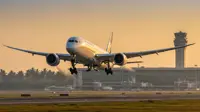The road less travelled
19 Oct 2002
Kolkata: If you have already visited most of the popular holiday destinations and are looking for places off the beaten track, here are eight new travel destinations for which you can head this holiday season. Reaching these exotic places is not too demanding on the purse either.
So here goes…
Uzbekistan
When to visit
Spring (April to June) and autumn (September through October) are the most pleasant seasons to travel. The weather is mild and in April the desert blooms briefly. In autumn it is harvest time, and the markets are full of fresh fruit. If you’re interested in trekking through the mountains, summer (July and August) is a better time to visit — at all other times the weather is unpredictable and there can be snow in the passes.
Currency and costs
You can expect to spend $ 30 per day per person (Rs 1440) for meals and lodging. $1 is equal to 764 Uzbekistan Sums.
Where to go Tashkent, Samarkand, Bukhara and Khiva, all of which boast of monuments, madrassas, kaleidoscopic bazaars and a culture that is centuries old. Ferghana Valley, Shakhrisabz (hometown of Timur-i-Lang) and Moynaq, an old fishing port town, are some destinations off the beaten track.
Tashkent, Samarkand, Bukhara and Khiva, all of which boast of monuments, madrassas, kaleidoscopic bazaars and a culture that is centuries old. Ferghana Valley, Shakhrisabz (hometown of Timur-i-Lang) and Moynaq, an old fishing port town, are some destinations off the beaten track.
Activities
Rafting, kayaking, walks and hiking trails.
Shopping
Ceramics, calligraphy, miniature painting, woodcraft, carpets, embroidered articles, metal chasing and engraved metal articles will vie for your attention at the bazaars.
How to get there
Take the Delhi-Tashkent flight by Uzbekistan Airlines. Travel fare between Delhi to Tashkent is Rs 15,000 return ticket for one person (visa charges not included).
What to carry
You need to carry light woollens, walking shoes, torchlight, mosquito repellent, moisturiser.
Kenya Revered by anthropologists as the Cradle of Humanity, Kenya lies at the heart of the African safari country, boasting the most diverse collection of wild animals on the continent. Its special appeal lies in its unique combination of wildlife sanctuaries, breathtaking scenery, sophisticated accommodation and hospitable people.
Revered by anthropologists as the Cradle of Humanity, Kenya lies at the heart of the African safari country, boasting the most diverse collection of wild animals on the continent. Its special appeal lies in its unique combination of wildlife sanctuaries, breathtaking scenery, sophisticated accommodation and hospitable people.
When to go
The main tourist season is in January and February, since the hot, dry weather at this time of year is generally considered to be the most pleasant. This is also the season when birds flock to the Rift Valley lakes in great numbers. The rains hit from March to May (and to a lesser extent from October to December). During these months things are much quieter — places tend to have rooms available and prices drop. The rains generally don’t affect travellers’ ability to get around.
Where to go
The capital city of Nairobi, Mombassa, Masai Mara National Reserve, Marsabit National Park and Reserve, and Lamu (Kenya’s oldest town). Places off the beaten track include Kakamega Forest Reserve, Nakuru Lake, Hyrax Hill prehistoric site, Amboseli National Park and Aberdare National Park.
Currency and costs The currency is the Kenyan shilling (KSh), divided into 100 cents ($1 is equal to 78.5 KSh). At the lower end of the Kenyan experience, you could get by on $15-20 a day. Double this for comfortable travel and expect to pay anything from $25 to $60 or more a day for a safari. Every town has small cafes catering to local people where you can get a traditional meal for under $5. For just a little bit more, Kenya’s Indian restaurants are great value.
The currency is the Kenyan shilling (KSh), divided into 100 cents ($1 is equal to 78.5 KSh). At the lower end of the Kenyan experience, you could get by on $15-20 a day. Double this for comfortable travel and expect to pay anything from $25 to $60 or more a day for a safari. Every town has small cafes catering to local people where you can get a traditional meal for under $5. For just a little bit more, Kenya’s Indian restaurants are great value.
What to carry
Mosquito repellent, light clothing, sunglasses, walking shoes. Get your yellow fever vaccination before you travel.
How to get there
Kenya Airways will carry you on the route Mumbai-Nairobi-Mumbai. The airfare for return ticket is Rs 18,500 (visa charges and taxes not included).
Vietnam This dignified country has managed to preserve its rich civilisation and highly cultured society. Most visitors to Vietnam are overwhelmed by the sublime beauty of the country’s natural setting: the Red River Delta in the north, the Mekong Delta in the south and almost the entire coastal strip are a patchwork of brilliant green rice paddies tended by women in conical hats. There are some divine beaches along the coast too, while inland there are soaring mountains. The country has discarded its postwar fatigues. The boom in budget travelling, coupled with the softening of government control, has enabled the country to offer tourists a rare treat.
This dignified country has managed to preserve its rich civilisation and highly cultured society. Most visitors to Vietnam are overwhelmed by the sublime beauty of the country’s natural setting: the Red River Delta in the north, the Mekong Delta in the south and almost the entire coastal strip are a patchwork of brilliant green rice paddies tended by women in conical hats. There are some divine beaches along the coast too, while inland there are soaring mountains. The country has discarded its postwar fatigues. The boom in budget travelling, coupled with the softening of government control, has enabled the country to offer tourists a rare treat.
When to go
There are no good or bad seasons to visit Vietnam. When one region is wet, cold or steamy hot, there is always somewhere else that is sunny and pleasant. Basically, the south has two seasons: the wet (May to November, wettest from June to August) and the dry (December to April). The hottest and most humid time is from the end of February to May. The central coast is dry from May to October and wet from December to February. The highland areas are significantly cooler than the lowlands, and temperatures can get down to freezing in winter. The north has two seasons: cool, damp winters (November to April) and hot summers (May to October). There is the possibility of typhoons between July and November, affecting the north and central areas.
Costs Travellers staying in budget accommodation and eating in small cafes should be able to get by on $20-25 per day, plus long-distance transport costs. Those wanting to stay in midrange hotels, eat out at moderate restaurants, charter occasional taxis and enjoy the nightlife should budget around $65 a day.
Travellers staying in budget accommodation and eating in small cafes should be able to get by on $20-25 per day, plus long-distance transport costs. Those wanting to stay in midrange hotels, eat out at moderate restaurants, charter occasional taxis and enjoy the nightlife should budget around $65 a day.
Where to go
Ho Chi Minh City or Saigon is the heart and soul of Vietnam. Sights here include Giac Lam Pagoda, Reunification Palace, Notre Dame Cathedral, Ben Thanh Market and the War Remnants Museum. Other cities include Dalat, Nha Trang (which has the potential to be developed like Thailand’s Pattaya Beach), Hue, Halong Bay and Hanoi. Most of these places are ideal for snorkelling, cycling, hiking, horseracing and diving.
How to get there
Thai Airways will take you on the Kolkata-Bangkok-Kolkata route for Rs 9,800. The Bangkok-Ho Chi Minh City-Bangkok is a bit steeper at Rs 16,780 (visa charges and taxes are not included).
Israel The land of the birth of three religions — Judaism, Christianity and Islam — Israel offers the visitor everything, from the spiritual heights of Jerusalem to the lowest point on earth — the Dead Sea, from the excavated centres of the ancient civilisation to gleaming, modern cities. You shall have the unique experience of visiting bistros and boutiques at ancient bazaars, a great cuisine and a variety of entertainment.
The land of the birth of three religions — Judaism, Christianity and Islam — Israel offers the visitor everything, from the spiritual heights of Jerusalem to the lowest point on earth — the Dead Sea, from the excavated centres of the ancient civilisation to gleaming, modern cities. You shall have the unique experience of visiting bistros and boutiques at ancient bazaars, a great cuisine and a variety of entertainment.
Where to go
A five-day tour would typically include arrival at Tel Aviv followed by a city tour and Bethlehem. The next day would be a full-day tour to Galilee and Nazareth. The third day would be an excursion to the Dead Sea, visiting the Qumran Caves. The next day would be back to Tel Aviv and departure.
When to go
Israel remains pleasant throughout the year, but the best time to visit is between April and November when diurnal temperatures vary between 15 and 25 degrees centigrade.
Currency and costs The currency of Israel is the shekel ($1 is equal to 4.66 shekels). If you’re on a tight budget, you can get a pretty good dorm bed for $7 per day upwards. If you want a double room with its own bathroom, you’ll be looking at around $50. Food is the real budget breaker — although it’s possible to live on three felafel rolls a day for about $2, realistically you’ll need $10-16 if you’re ever going to get a break from street food. For $25-30 you should be able to get decent accommodation, eat well and travel around.
The currency of Israel is the shekel ($1 is equal to 4.66 shekels). If you’re on a tight budget, you can get a pretty good dorm bed for $7 per day upwards. If you want a double room with its own bathroom, you’ll be looking at around $50. Food is the real budget breaker — although it’s possible to live on three felafel rolls a day for about $2, realistically you’ll need $10-16 if you’re ever going to get a break from street food. For $25-30 you should be able to get decent accommodation, eat well and travel around.
Activities
Israel is a great country for hiking, swimming, windsurfing, sailing, water skiing, diving.
What to carry
Light clothes, walking shoes, swimming gear. You won’t need water purifiers nor have to worry about fresh vegetables and produce as these are all world-class here. You don’t need to be vaccinated against any disease either.
How to get there
Royal Jordanian Airlines plies New Delhi-Amman-Tel Aviv-Amman-New Delhi at Rs 28,500 per person (visa charges and taxes are not included).
Turkey A spicy maelstrom of history knocking up against the present, Turkey is a great country to visit. The Turks are mostly overwhelmingly friendly to foreign visitors, the cuisine is frequently excellent, the cities are dotted with majestic old buildings and the countryside can evoke a good old-fashioned gasp. Whether you leave Turkey with magnificent carpets, amulets to ward off evil, belly-dancing tips, an appreciation of its history, or just a tan, you’re likely to want to go back for more.
A spicy maelstrom of history knocking up against the present, Turkey is a great country to visit. The Turks are mostly overwhelmingly friendly to foreign visitors, the cuisine is frequently excellent, the cities are dotted with majestic old buildings and the countryside can evoke a good old-fashioned gasp. Whether you leave Turkey with magnificent carpets, amulets to ward off evil, belly-dancing tips, an appreciation of its history, or just a tan, you’re likely to want to go back for more.
When to go
Spring (April to June) and autumn (September to November) are best. The climate is perfect on the Aegean and Mediterranean coasts then, as well as in Istanbul.
Costs and currency
The currency is the Turkish lira ($1 is equivalent to 1,635,000 Turkish liras). You can travel on as little as $20 per day using buses and trains, staying in pensions, and eating one restaurant meal daily. For $25-40 you can travel on plusher buses, take well-cushioned train seats, kick back in 1- and 2-star hotels and eat most meals in restaurants. For $40-80 per day you can move up to 3- and 4-star hotels, take the occasional airline flight, and dine in restaurants all the time.
Where to go You can plan a seven-day tour to Turkey and pack in the best of Turkey in a week. The places that you will cover are Istanbul, Ankara, Cappadocia, Pammukkale, Kusadasi, Ephesus, Pergamum, Canakkale and Troy.
You can plan a seven-day tour to Turkey and pack in the best of Turkey in a week. The places that you will cover are Istanbul, Ankara, Cappadocia, Pammukkale, Kusadasi, Ephesus, Pergamum, Canakkale and Troy.
Shopping
Turkey is a shopper’s paradise with good and cheap shopping possible. Bargaining usually pays off. Clothes, jewellery, handicrafts, leather apparel, carpets, coloured tiles, crockery, carved meerschaum, brass, copperware are generally good buys.
How to get there
You could take the Royal Jordanian Airlines from New Delhi to Istanbul for Rs 25,000 (visa charges and taxes are not included).
Sri Lanka Often called the Pearl of the Orient, Sri Lanka is a land of sunshine, beaches, mountains, waterfalls, tea plantations, coconut palms, spices and gems. Its 1,600-km coastline contains fine beaches, wide stretches of sand, miles of crystal-clear water, pretty bays and deep natural harbours. If you are bitten by the culture bug try the Kandyan dances, a procession of elephants or the masked devil dances. If you dig ruins, you’ll find enough ancient and inspiring architecture in the cities of Anuradhapura and Polonnaruwa to satisfy that inner archaeologist.
Often called the Pearl of the Orient, Sri Lanka is a land of sunshine, beaches, mountains, waterfalls, tea plantations, coconut palms, spices and gems. Its 1,600-km coastline contains fine beaches, wide stretches of sand, miles of crystal-clear water, pretty bays and deep natural harbours. If you are bitten by the culture bug try the Kandyan dances, a procession of elephants or the masked devil dances. If you dig ruins, you’ll find enough ancient and inspiring architecture in the cities of Anuradhapura and Polonnaruwa to satisfy that inner archaeologist.
When to go
Climatically the driest and best seasons are from December to March on the west and south coasts and in the hill country, and from May to September on the east coast. December to March is also the time when most foreign tourists come, the majority of them escaping the European winter. Out-of-season travel has its advantages — not only do the crowds go away but many airfares and accommodation prices go right down. Nor does it rain all the time. Reefs may protect a beach area and make swimming quite feasible at places like Hikkaduwa, which during the monsoon can be quite pleasant.
Currency and costs
The currency of Sri Lanka is the Sri Lankan rupee ($1 is equivalent to 96.03 Sri Lankan rupees). Sri Lanka is a pleasantly economical country to travel around. Shoestring travellers can exist comfortably on less than $20 a day by staying in basic share or double rooms, getting around by bus and not dining out at flashy restaurants. Up the scale a bit, add $5 or $10 for kipping down in delightful rest houses, or plan on around $100 a day if you want the full five-star treatment.
What to carry Light cotton dresses and lightweight suits. A wide-brimmed beach hat and sunglasses, comfortable shoes or sandals are a must. In the hill country, pullovers will be necessary. Visitors should be decently clad when visiting any place of worship. All visitors to Buddhist and Hindu temples are expected to take their shoes off. Topless sunbathing is prohibited. Don’t forget your mosquito repellent, anti-malarial tablets, and swimming gear.
Light cotton dresses and lightweight suits. A wide-brimmed beach hat and sunglasses, comfortable shoes or sandals are a must. In the hill country, pullovers will be necessary. Visitors should be decently clad when visiting any place of worship. All visitors to Buddhist and Hindu temples are expected to take their shoes off. Topless sunbathing is prohibited. Don’t forget your mosquito repellent, anti-malarial tablets, and swimming gear.
Where to go
A six-day tour of Sri Lanka would ideally include Colombo, Habarana and Polonarruwa. The second day you get to travel to the fifth century capital Anuradhapura and the Mihitale historical site. On the third day, you could proceed to Kandy to visit rock temples, a spice garden and a Batik factory. The fourth day could see you in Nuwara Eliya, a tea plantation and tea factory. The fifth day you could be back in Colombo city.
How to get there
Indian Airlines flies Chennai-Colombo-Chennai at Rs 8,300 return ticket (visa charges and taxes are not included).
Bhutan Bhutan is an extraordinary place hardly touched by the hands of time. Nestling in the heart of the great Himalayas, it remained in self-imposed isolation for centuries, aloof from the rest of the world. Since its doors were cautiously opened in 1974, visitors have been mesmerised. The environment is pristine, the scenery and architecture awesome, the people hospitable and charming, and the culture unique in its purity.
Bhutan is an extraordinary place hardly touched by the hands of time. Nestling in the heart of the great Himalayas, it remained in self-imposed isolation for centuries, aloof from the rest of the world. Since its doors were cautiously opened in 1974, visitors have been mesmerised. The environment is pristine, the scenery and architecture awesome, the people hospitable and charming, and the culture unique in its purity.
When to go
The best time to visit is October-November and during major festivals. The climate is best in autumn, from late September to late November, when the skies are clear and the high mountain peaks are visible. This is the ideal time for trekking and for travelling throughout the country. You're likely to get wet no matter what the season, but avoid the June-August monsoon season.
Currency and costs
The currency of Bhutan is the ngultrum. It is at par with the Indian rupee. Groups of fewer than four people pay a daily surcharge, ranging from $20 per person in a group of three to $40 for a lone traveller. This covers all your costs apart from drinks, laundry and cultural splurges such as a traditional Bhutanese hot-stone bath.
Where to go
Your itinerary should include Thimpu, the country’s picturesque capital city. It is the only world capital without traffic lights. Other must-sees include Paro, Bumthang, Phobjika Valley. Other attractions are Trashigang, Sakteng Wildlife Sanctuary and Laya.
Activities
Trekking and rafting.
What to carry Bhutan’s changeable climate means you have to bring an assortment of clothes. Walking boots are essential and it’s useful to carry a windbreaker. Warm clothes are recommended for the evening and lighter attire for daytime. Carry mosquito repellent, and be warned against hepatitis A.
Bhutan’s changeable climate means you have to bring an assortment of clothes. Walking boots are essential and it’s useful to carry a windbreaker. Warm clothes are recommended for the evening and lighter attire for daytime. Carry mosquito repellent, and be warned against hepatitis A.
How to get there
Druk Air will carry you on the Kolkata-Paro-Kolkata route for Rs 7,000 (visa charges and taxes are not included).
Shopping
Shop for colourful masks, hand-woven bamboo items, woodcarvings, stamps (coveted by collectors), silver, silk and bronzes. Handmade paper products, Buddhist paintings and religious thangkas are also popular items. The best selection can be found at emporiums in Thimphu. Tongsa is the best place to buy yatras, colourful strips of cloth used in everything from blankets to jackets. Do not purchase antiques — they will not be allowed out of the country.
China China, one of the four oldest civilisations in the world is 5,000 years old. Its rich cultural heritage boasts of many myths and legends, kingdoms and dynasties. China isn’t a country — it’s a different world. From shop-till-you-drop metropolises to the epic grasslands of Inner Mongolia — with deserts, sacred peaks, astounding caves, and imperial ruins — it’s a land of cultural and geographic schisms. The yin of revolutionary zeal is being balanced by the yang of economic pragmatism, and the old guard communists are giving way to the new wave of e-commerce.
China, one of the four oldest civilisations in the world is 5,000 years old. Its rich cultural heritage boasts of many myths and legends, kingdoms and dynasties. China isn’t a country — it’s a different world. From shop-till-you-drop metropolises to the epic grasslands of Inner Mongolia — with deserts, sacred peaks, astounding caves, and imperial ruins — it’s a land of cultural and geographic schisms. The yin of revolutionary zeal is being balanced by the yang of economic pragmatism, and the old guard communists are giving way to the new wave of e-commerce.
When to go
Spring (March-April) and autumn (September-October) are the best times to visit China. Daytime temperatures range from 20-30°C (68-86°F) in these seasons, but nights can be bitterly cold and it can be wet.
Where to go
Beijing, Shanghai, Xian, Giu Lin, Chongqing, Fengdu, Shennong and the Three Gorges Dam. Take your pick.
Currency and costs The Chinese currency is the renminbi (RMB). The basic unit is the yuan ($ 1 is equivalent to 8.23 yuans). Generally, eastern China is much more expensive than the western part of the country. Visitors to eastern China could budget around $50 a day, but it would be a challenge. Budget travellers in western China should be able to keep costs down to $25 per day. The main drain on savings tends to be long train journeys. Food is cheap throughout China, and if you’re careful you won’t have to spend much more than $7 a day on meals.
The Chinese currency is the renminbi (RMB). The basic unit is the yuan ($ 1 is equivalent to 8.23 yuans). Generally, eastern China is much more expensive than the western part of the country. Visitors to eastern China could budget around $50 a day, but it would be a challenge. Budget travellers in western China should be able to keep costs down to $25 per day. The main drain on savings tends to be long train journeys. Food is cheap throughout China, and if you’re careful you won’t have to spend much more than $7 a day on meals.
Activities
Cycling, hiking, caving, camel rides (Mongolia), tai chi and horse riding.
What to carry
Pack lightly, and bring casual clothes. A comfortable pair of walking shoes is a must. Bring a couple of shirts, sweaters, and a jacket (depending on the season) that can be worn in layers to accommodate China’s range of climates. Wash-and-wear clothing is preferable, although all hotels offer reliable laundry and dry cleaning services. Don’t forget to take along a travel alarm, a good travel guide, and a map.
How to get there
China Eastern Airlines flies relatively cheaper rates between New Delhi-Shanghai-New Delhi or New Delhi-Beijing-New Delhi at Rs 25,000 (visa charges and taxes are not included).




















